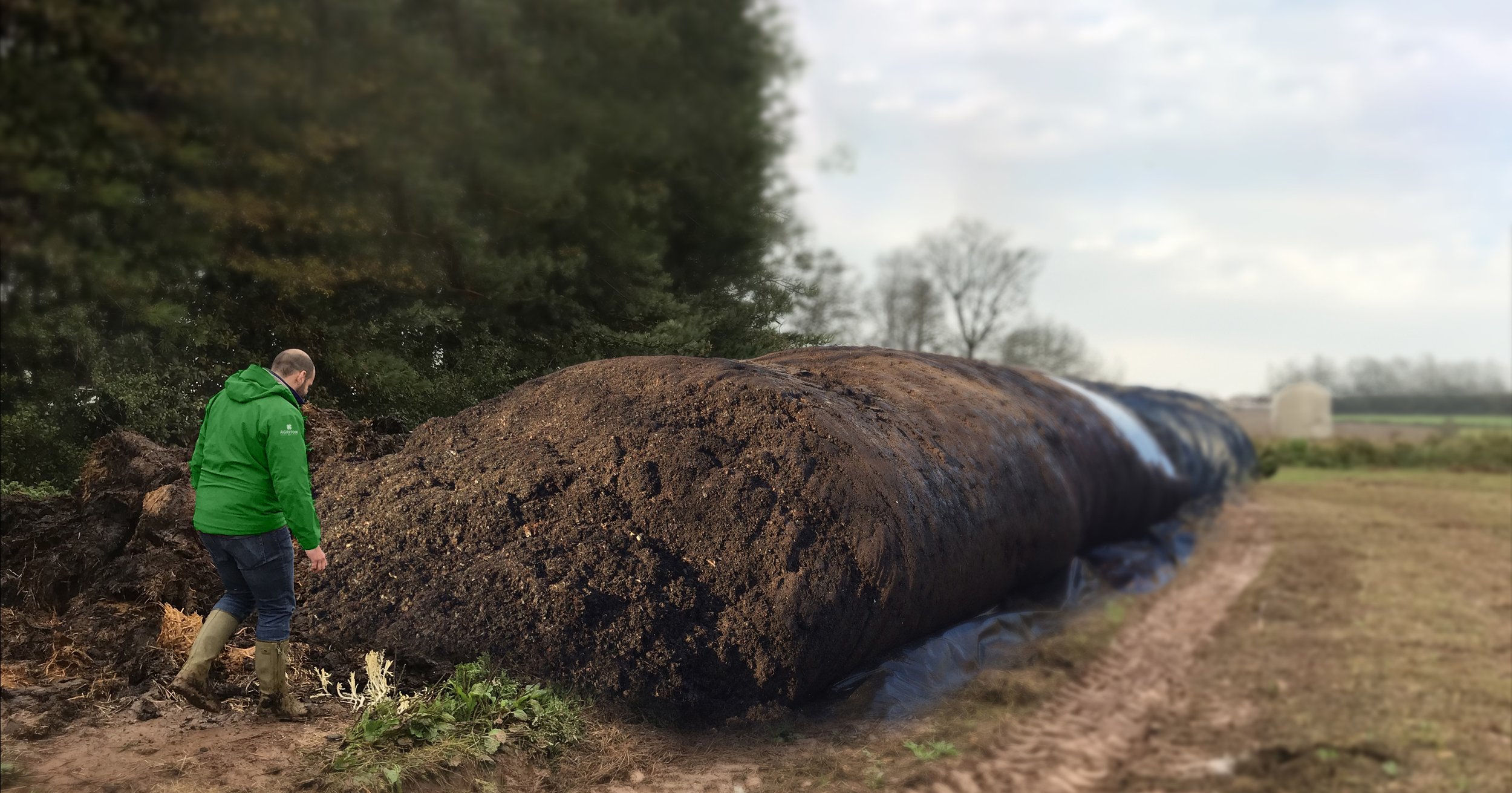
Bokashi Composting A Natural Way to Reduce Waste
Everything you’ll need…
-

Actiferm
It doesn’t matter how you make Bokashi, you won’t be able to do it without the Microbes! Actiferm Microbes are activated EM-1 and ready to use.
-

Ægir
Ægir Seashell grit for pH correction within the Bokashi heap. You’ll need this if you’re treating high nitrogen materials or a lot of organic matter all at once.
-

Edasil
Edasil Clay Minerals act as a nutrient binder. It is really useful if you have a high moisture content, want to prevent leaching or have sandy soils.
Making manures matter
Farmyard manure (FYM) can be enhanced through the Bokashi process, a Japanese term meaning “well fermented organic matter.” Bokashi is one of the most energy-efficient ways to break down farmyard manure, transforming it into a nutrient-rich, pre-digested material that can be used as a powerful soil improver and organic fertiliser.
When Effective Microorganisms (EM®) are added to the manure, they work through competitive exclusion to establish an environment where fermentative anaerobes dominate. This process breaks down the complex organic components of the manure into simpler, soluble nutrients that are more easily absorbed by the soil.
In addition to improving nutrient availability, the microorganisms in Bokashi produce bioactive compounds such as enzymes, vitamins, antimicrobials, and phytonutrients. These substances not only enhance plant growth but also help protect crops from diseases. By applying Bokashi-treated manure to your fields, you promote healthier, more resilient soils, which can lead to better crop yields and long-term soil vitality.

agriton BOKASHI
For soil health & fertility
Typically, we provide N-P-K in the form of artificial mineral fertilisers to increase crop yield, however, this yield almost always comes at a cost. Nutrient density as well as long term negative effects on soil health and fertility from artificially fed crops are the biggest concerns, with direct and indirect environmental impacts also significant.
Bokashi, on the other hand, feeds the soil not the crop. By applying Bokashi to the soil you provide so much more than just N-P-K. The soil food web cycles nutrients continually making them available throughout the growing season.
good FOR the environment
If we could recycle and reuse this organic matter effectively and efficiently we could easily reduce our need for artificial fertiliser and other inputs while rebuilding soil organic matter and improving soil health. Soil and soil health are the foundation upon which every farming enterprise is built.
Animal Manure & Bedding - Bokashi
Fermentative decomposition, as with Bokashi, not only breaks down the woody and fibrous materials in as little as 8 weeks but also retains almost all of the nutrients. These nutrients would normally be released into the atmosphere as harmful emissions during traditional aerobic composting or leached into water courses causing pollution.
Retain more nutrients
No harmful emissions
Breakdown organic matter
Increase soil organic matter
Ready in just 8 weeks
Bokashi is the Japanese word for “well fermented organic matter”. Bokashi is the most energy efficient way of breaking down organic matter and recycling nutrients. The fermentative decomposition creates a nutrient dense end product that can be used as a soil improver.
Effective Microorganisms (EM®) added to the organic matter work by way of competitive exclusion to create an environment in which fermentative anaerobes can dominate. This dominance leads to the break down of complex organic substances into simpler soluble organic ones creating a pre-digested food for the soil.
The microbes also produce bio-active substances, like enzymes, vitamins, antimicrobials and phytonutrients which favours the development of plants and helps prevent diseases.
Bokashi FAQ’s
-
There are a number of different ways in which you can make Bokashi which is good news for you!
No two farms are identical and therefore what works for one farm won’t work for another. Yes the principle of moisture content and C:N ratio matter but after that it’s a case of what suits you and your setup best.
We have farmers who apply the microbes onto the bedding with a knapsack sprayer once a week, others apply the microbes through specially installed misting systems and some even apply the microbes onto the straw before the bale goes through the straw blower.
There are farmers who have a straw for muck arrangement and they add the amendments onto each trailer as it comes into the farm while others apply onto the bedding before it is mucked out.
The truth is there is no right or wrong way which is why it is best to speak to one of our experts who can understand you set up and management before suggesting which method will work best for you.
-
Bokashi works with ANY organic manure. It really doesn’t matter if it’s Cattle, Sheep or Chicken manure. The only consideration you need is the moisture content and C:N ratio (carbon : nitrogen).
-
You want at least 40% moisture in a Bokashi heap, but the truth is, the more moisture the better.
Obviously you don’t want to add too much moisture that the heap is no longer stackable, but otherwise, more water will almost always result in a better fermentation.
If, when you pick up a handful of organic matter in your hand and squeeze, no water comes out, you could add more. If, when you squeeze the organic matter water droplets fall, you probably have too much.
-
The C:N ratio is probably the most important consideration when making Bokashi. Too much carbon and you won’t achieve a decent breakdown and too much nitrogen and you risk experiencing losses.
Different microbes thrive on different foods. Fungi, for example, prefer higher carbon whereas bacteria will thrive with higher nitrogen.
If you aim for a C:N ratio of 20:1, you will have a nicely balanced food source that will support a wide diversity of microbes. A C:N ratio of 20:1 will also ensure there is a significant level of organic matter breakdown, creating a spreadable bokashi ferment that can be applied onto or into the soil. -
One of the most common questions is, ‘Do we have to cover the Bokashi heap?’.
In a word. Yes.
The reason why we cover a Bokashi heap is for two reasons. Firstly, to ferment the organic matter we need to maintain an anaerobic environment.
Just like a silage clamp, if you didn’t cover a silage clamp you would have a lot of wastage.
Secondly, covering the heap prevents rain from falling onto the organic manure and leaching away nutrients.










